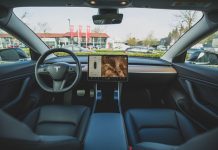
You want a new vehicle that runs on electricity not only for changing your dependence on gasoline, but it’s better for the environment. As a world, we have finally reached the point where electric vehicles are fun, practical, and at different price points. Before purchasing an electric vehicle, think about how you will drive it and if it will hold up to the distance you travel and the ability to find charging stations.
For those who want to know the technicalities about how an electric vehicle is powered, it’s actually very simple. The battery in an electric vehicle consists of cells, so it’s kind of like the cells in your body. The cells are filled with chemicals that create electricity when they come into contact with each other. In an electric vehicle, you have a positive and negative pole in the battery itself, and when electricity passes through it, it creates power.
Electric Vehicles (EVs) can run miles per charge, but there are many factors that they all have in common when it comes to how much charge is available when they start. The design of the electric vehicle sets a cap on just how far it can travel; because of this, all-electric vehicles have about 80% – 95% charge when leaving the factory.
Why is that?
It’s because when an electric vehicle leaves the factory and spends a day in storage, it is charging to 100%, but when you take possession of the car and drive it, it slowly drains. This is due to the fact that the onboard computer takes a “snapshot” of the battery’s charge when you leave the factory. It assumes that the next time you charge your car, it will have 80% or 90% capacity and uses this snapshot to calculate how much energy the car uses.
The batteries are not perfect, so your car may have a lower charge than what was recorded in the computer when you left the factory. This is why you shouldn’t worry about leaving your car plugged in overnight if it only has a 50% charge. It’s not going to drain your battery, but it will reduce the overall charge of the battery over time.
After an electric vehicle has passed through a smog inspection, you can drive off it the lot without charging first. This requirement is because the cost of charging an electric vehicle is much cheaper than the cost of filling a gas tank. It is actually cheaper to charge an electric vehicle from empty to full in California than it is to put a full tank of gas in your average car. These prices vary state to state, but usually, electricity is cheaper than gas.
When it comes to EVs, there are a couple of different types of charging: Level 1 and Level 2.
– A level 1 charger uses a regular outlet and charges at 1-5 miles per hour.
– A level 2 charger uses a charging station, like those used for recharging electric cars, and charges at 3-12 miles per hour.
– The type of electric car you drive will determine the amount of time it takes to charge your battery.
- Electric cars that use a Nissan Leaf battery typically take four to eight hours to charge from 0 to 100 percent, using a level 2 charger.
- Like the Tesla Roadster and Vectrix VX-1, other EVs can take up to six hours to charge from 0 to 100 percent, using a level 2 charger.
Lithium-ion batteries are the number one battery in electric vehicles, followed by lead-acid batteries. Some vehicles also have an additional lead-acid battery.
- Electric cars that use lithium-ion batteries take less time to charge than those that use lead-acid batteries.
- Electric cars that use lithium-ion batteries typically take three to six hours to charge from 0 to 100 percent, using a level 2 charger.
- Electric cars that use lead-acid batteries typically take up to 12 hours to charge from 0 to 100 percent, using a level 2 charger.
Weather Factors:
- Electric vehicles lose range when it’s cold outside, and you’ve been driving for a while. The batteries simply do not work as well at cold temperatures, so you may see a decreased range.
- Electric vehicles lose range when the weather is hot. The battery of an electric vehicle is more efficient in cold weather because the chemical make-up of the battery allows more electricity to flow. When it’s hot and sunny, the battery is less efficient.
- Many manufacturers recommend not charging your electric car during extremely cold weather or extremely hot weather. Doing so can reduce the life and reduce the efficiency of your battery. Charging your electric car can have weather considerations.
- The weather can also impact how quickly you use up battery power and even impact the estimated range on your electric car’s display.
- When the weather is extremely hot, heat can damage the batteries.
This decade and beyond will be worth investing in an electric vehicle. As more people purchase them, the availability of charging stations will increase. The miles per charge will increase, and the vehicle abilities will improve. Think of a world where we don’t depend on gasoline for vehicles.
Whether buying an EV or just looking for a regular daily driver, check out this article on buying used cars.






